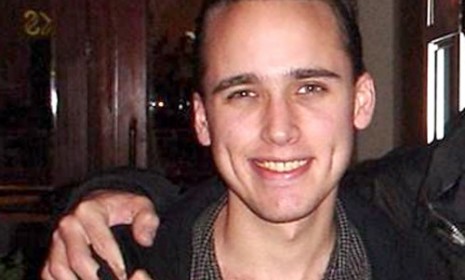WikiLeaks: Who is hacker 'hero' Adrian Lamo?
The the former hacker who turned in WikiLeaks whistle-blower Bradley Manning has had his own run-ins with the F.B.I.

The F.B.I. had help from an unlikely source when it caught up with Army intelligence officer Bradley Manning, the alleged source of the WikiLeaks "Collateral Murder" video. Former hacker Adrian Lamo, 29, who notoriously broke into The New York Times computer system in 2002, tipped off authorities after Manning, 22, allegedly contacted him to brag about providing the controversial combat video and 260,000 classified diplomatic cables to WikiLeaks, a whistle-blower website. Some in the hacker community have bombarded Lamo with death threats for reporting Manning, but others have heralded him as a national "hero." How did Lamo become such an integral part of the WikiLeaks scandal? (Watch a Russia Today report about the WikiLeaks site)
Why did Manning contact Lamo about WikiLeaks?
Manning reportedly read about Lamo's hacking exploits in a Wired magazine profile, and decided to contact him through instant message and email. Judging by the chat logs, says Wired, Manning sensed he had found a "kindred spirit" in the former hacker. Manning allegedly claimed credit for leaking the WikiLeaks video, but when he said he had also leaked classified diplomatic cables, Lamo decided to report him. "I couldn't just not do anything, knowing lives were in danger, said Lamo. "It's classified information, and when you play Russian roulette, how do you know there's not a bullet in the next chamber?"
The Week
Escape your echo chamber. Get the facts behind the news, plus analysis from multiple perspectives.

Sign up for The Week's Free Newsletters
From our morning news briefing to a weekly Good News Newsletter, get the best of The Week delivered directly to your inbox.
From our morning news briefing to a weekly Good News Newsletter, get the best of The Week delivered directly to your inbox.
How did Lamo become so well known among hackers?
Lamo first gained notoriety in late 2001, after breaching Excite@Home's "supposedly airtight" company network. He also broke into the internal networks of Yahoo!, Google, and communications giant MCI WorldCom. After cracking through the companies' security systems, Lamo informed them of their vulnerabilities, and helped them close the holes, free of charge. Asking for money "would have been crossing a line," said Lamo in an interview with the Sacramento Bee. "That never would have felt right." But it was when Lamo slipped past the defenses of The New York Times that he secured enduring fame.
How did he do that?
Using a computer at a downtown Sacramento, Calif., Kinkos, Lamo — who is also known as the "homeless hacker" because he once wandered the country by Greyhound bus and squatted in abandoned buildings — breached the intranet of The New York Times just to prove he could. "I just wanted to see what their network was like," he said in a recent interview. "It was going to be The Washington Post, but I got distracted by a banner ad." Once inside, Lamo gained access to subscriber information and the home telephone numbers of more than 3,000 Op-Ed contributors, including Warren Beatty, former president Jimmy Carter, and Rush Limbaugh. Facing computer fraud charges, he made a deal with prosecutors and got six months of house arrest, two years of probation, and a $65,000 fine.
A free daily email with the biggest news stories of the day – and the best features from TheWeek.com
Why did Lamo hack into so many corporations?
His reasons vary — but mostly he chalks up his hacking to an insatiable curiosity for how things work. Lamo, who was recently diagnosed with Asberger's syndrome, has been fascinated by the internal operations of systems since childhood. As a "very young child," Lamo revealed in an interview with CNet, I was "interested in figuring out, say, the school public address system or the garbage schedule to the office so I could grab the memos that teachers had discarded on the way to class to know what it was they were meeting about, when the fire drills were, things like that and not for even any real particular purpose."
Sources: Wired, (2), (3), Sacramento Bee, Security Focus, CNet
-
 How Mississippi moved from the bottom to the top in education
How Mississippi moved from the bottom to the top in educationIn the Spotlight All eyes are on the Magnolia State
-
 Why Greenland’s natural resources are nearly impossible to mine
Why Greenland’s natural resources are nearly impossible to mineThe Explainer The country’s natural landscape makes the task extremely difficult
-
 The Week contest: Post-surgery Spanish
The Week contest: Post-surgery SpanishPuzzles and Quizzes